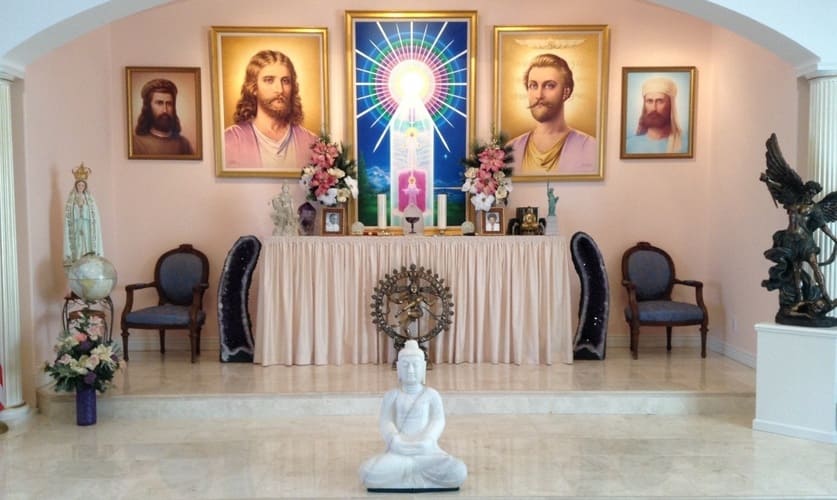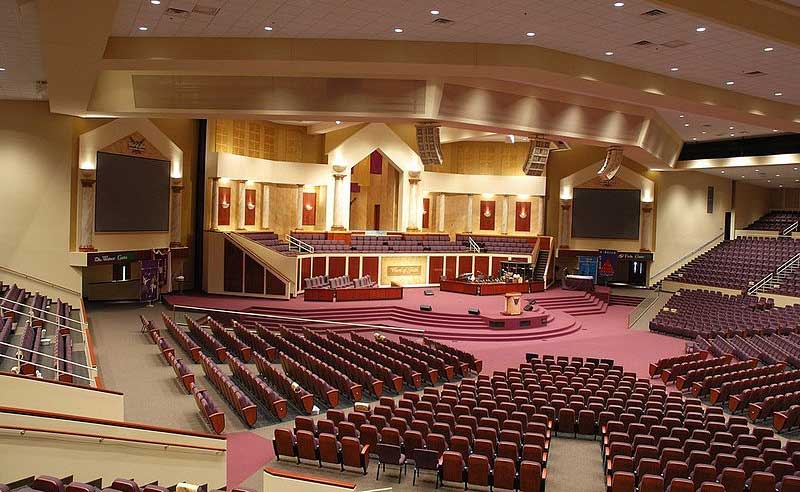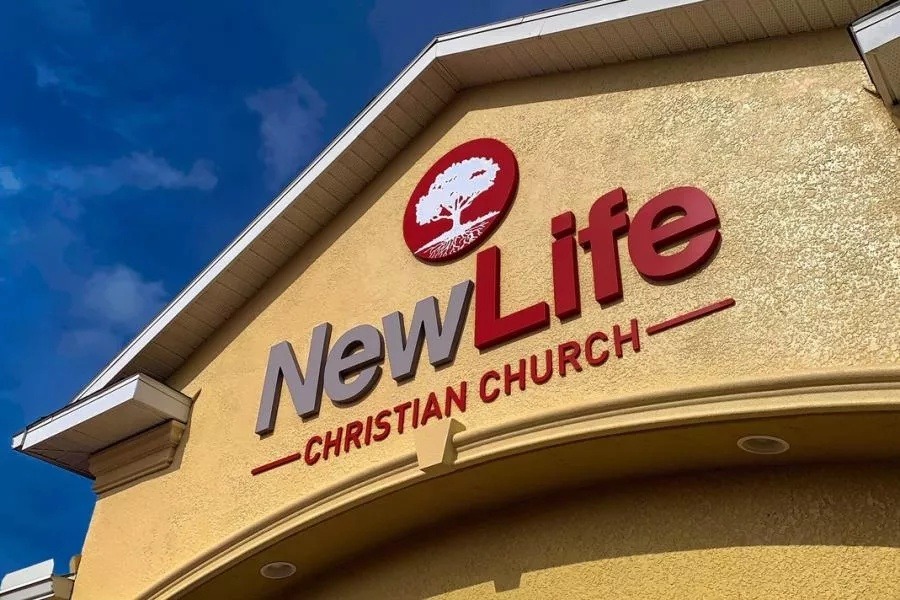Church Universal and Triumphant
Church Universal and Triumphant, the largest of several groups that emerged from I AM religious activity, a movement centered upon avowed contact with the Ascended Masters of the Great White Brotherhood, the order of spiritual beings, “the saints robed in white” that adherents believe guide the overall destiny of humankind.
the Church Universal and Triumphant operates with a belief system that incorporates elements from a number of faiths, most notably Buddhism and Christianity. Other types of beliefs, such as mysticism, paranormal activity, and alchemy also are included. A basic premise is that the great founders of all the major world faiths are given the title of ascended masters, and are capable of communicating with people who are willing to be open to communications.
The History Of Church Universal and Triumphant:
The Church Of Universal And Triumphant was formally incorporated on 1 May 1975, although the movement’s origins can be traced back to the founding of the Summit Lighthouse in 1958, which had formerly been associated with the Lighthouse of Freedom, another I AM organization.
Mark Prophet, one of the two founders of the CUT had been in contact with several Ancient Wisdom groups during the early 1950s. After studying with the Bridge to Freedom group, he chose to launch the Summit Lighthouse in Washington DC. In 1961, Prophet met Elizabeth Clare Wulf. Wulf, who came from a religious background that included Christian New Thought and Christian Scientist teachings, was immediately attracted to the beliefs of the Summit Lighthouse. The pair married in 1964 and subsequently had four children.
By 1966, the Prophets had loosely organized the basic structure of the church and moved the operation to Colorado Springs, Colorado. The effort of establishing a viable church there was successful, and a second center was opened in Santa Barbara, California in 1970. Santa Barbara was also the site for the new Ascended Master University, which would later be renamed Summit University. Back in Colorado Springs, the church opened a school, a health food store, and an organic restaurant. Prophet claimed to regularly receive messages from the Masters, which were published in the periodical Pearls of Wisdom and mailed to followers around the world.
Mark Prophet, who had been in increasingly poor health, passed away in February 1973, leaving his wife as the spiritual leader of the church, which was beginning to be known as the Church Universal and Triumphant, until her retirement in 1999.
Like many new religious movements, it has faced great criticism but has managed to survive and grow. Although the church does not release statistics on membership, it is reasonable to conclude that there are between 30,000 and 50,000 members in the United States and abroad.
In the 1980s the church attracted critics who complained that it was a cult. Their criticism escalated after Prophet announced that widespread disasters could occur in the early 1990s. This information had supposedly been provided to Prophet by El Morya, understood to be one of the Ascended Masters of the Blue Ray, and one of the masters regularly channeled by Prophet during worship services.
To that end, the members of the Church Universal and Triumphant began to construct underground bunkers where they could withstand the coming nuclear winter. When the war failed to materialize, many followers lost faith and left the church.
A claim by Elizabeth Clare Prophet that the intensity of prayers had managed to delay the nuclear launching further did little to placate the departing members. Among other changes, the church was decentralized, the headquarters community greatly reduced, and the temporal affairs of the church were placed in the hands of a new president, Gilbert Cleirbaut. Shortly thereafter, Prophet announced that she had Alzheimer’s disease and retired from leadership in 1999.

The Beliefs Of Church Universal and Triumphant:
The church believes in the I AM, or God Presence, which members believe is the higher, changeless aspect of every individual.
The church’s theology is a syncretistic belief system, including elements of Buddhism, Christianity, esoteric mysticism, and alchemy, with a belief in angels and elementals (or spirits of nature).
It centers on communications received from Ascended Masters through the Holy Spirit. Many of the Ascended Masters, such as Sanat Kumara, Maitreya, Djwal Khul, El Morya, Kuthumi, Paul the Venetian, Serapis Bey, the Master Hilarion, the Master Jesus, and Saint Germain, have their roots in Theosophy and the writings of Madame Blavatsky, C.W. Leadbeater, and Alice A. Bailey. Others, such as Buddha, Confucius, Lanto, and Lady Master Nada, were identified as Ascended Masters in the “I AM” Activity or the Bridge to Freedom.
Some, such as Lady Master Lotus and Lanello, are Ascended Masters who were first identified as such by Elizabeth Clare Prophet. All in all, she identified more than 200 Ascended Masters that were not identified as Masters of the Ancient Wisdom in the original teachings of Theosophy.
Mark Prophet, and later his wife, claimed to be Messengers of the Ascended Masters. As such they are able to communicate with the Masters and deliver their instruction to the world. Dictations described as coming directly from the Masters were published weekly as Pearls of Wisdom.
Church members may call upon the I AM presence through the repetition of invocational prayers called decrees. As a result of the messages Elizabeth Clare Prophet reputedly received from the Masters, she synthesized insights from all the major religious traditions in the church’s teachings. However, the faith’s basic goal is to purify the self in preparation for the ascension into the divine realms.
The major process of purification is the daily decreeing and the accompanying visualization of a surrounding violet flame that consumes all evil. Group members practice prayers, affirmations, mantras, and a dynamic form of prayer known as “decrees”. These serve many purposes: devotion, calling on angels for protection, calling forth the light of God on the earth, praying for healing, for wisdom, seeking to know God’s will, and for the transmutation of negative karma.
One of the most important uses of decrees is to invoke the violet flame, claimed to be the most effective method of balancing karma built up in the past. The doctrine of the Seven Rays is also taught, as well as teachings about the chakras and reincarnation
Controversy About Church Of Universal And Triumphant:
Along with many other new religious movements, Church Of Universal And Triumphant has been described as a cult, especially in the late 1980s and early 1990s. Articles and letters critical of the church were published in the local newspapers the Livingston Enterprise and the Bozeman Daily Chronicle. Several of the letters were written by former church members who raised lawsuits against the church. In 1986, the church was accused of using sleep deprivation to control its members
Public scrutiny intensified in 1989 when it was discovered that the Church Universal and Triumphant was building fallout shelters and that members of the church, including Vernon Hamilton and vice president and husband of Elizabeth Clare Prophet, Edward Francis, had purchased weapons illegally. The FBI, the ATF, and state, and local law enforcement agencies investigated the church.
The BATF investigation resulted in Francis being sentenced to one month in prison and three months house detention and Vernon Hamilton being sentenced to three months probation after spending 11 days in jail in Spokane, Washington. As a result of the government scrutiny, the church made several changes to its operations, including the appointment of a number of independent directors to its governing board.
In the summer of 1993, a team of academic specialists conducted an interdisciplinary study of the church and its members. They published their results in Church Universal and Triumphant in Scholarly Perspective, edited by James R. Lewis and J. Gordon Melton. These scholars rejected the negative stereotype of the organization as a cult.
Lewis characterized the organization and its leaders as one that was “trying to do the good” and as “one of the most intrinsically interesting religious communities to have come into being in this century.” Other scholars have cast doubt on these conclusions.
Robert Balch and Stephan Landgon, participants in the Lewis/Melton study, alleged that the original scholars themselves had engaged in groupthink, and did not observe what he called frontstage and backstage behavior and other research errors. Others accused Lewis and Melton of abandoning scholarly objectivity and claimed that they had allowed themselves to be co-opted by the Church. They also alleged that they had become effective spokespersons for the movement.
World Religions
Read also:
New Age Movement | History, Starting, Beliefs, Practices and Thoughts
The Summit Lighthouse | Definition, History, Spiritual Practice
Docetism | Definition, Beliefs and Christ Myth Theory
Believe In God | 9 Reasons People Don’t Believe In God




C’est très bien de servit Dieu.